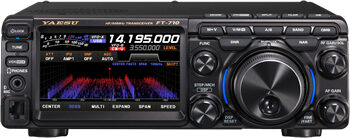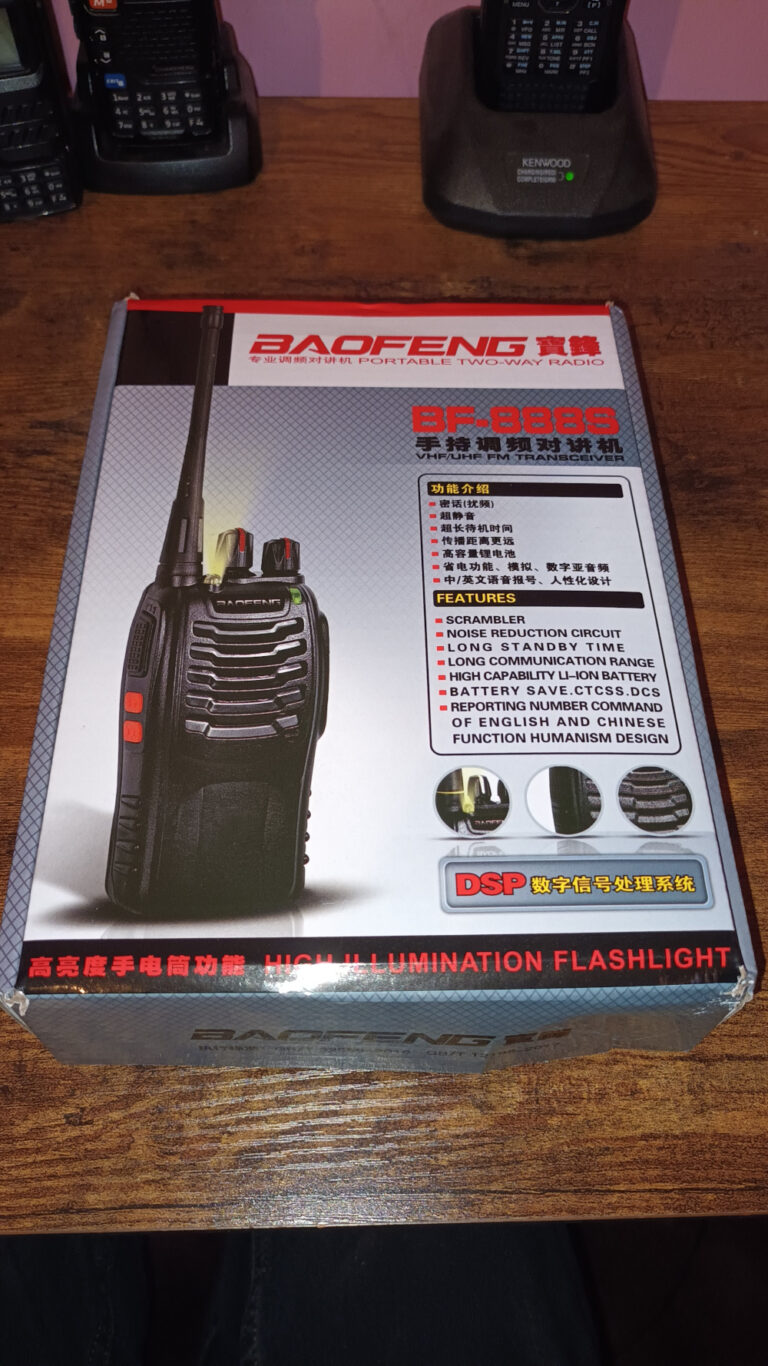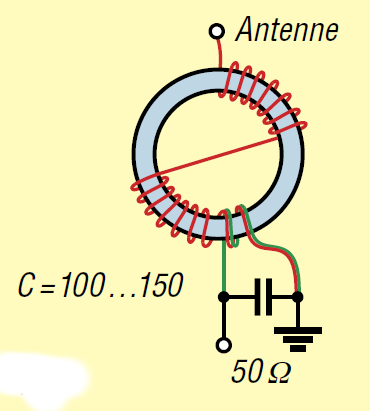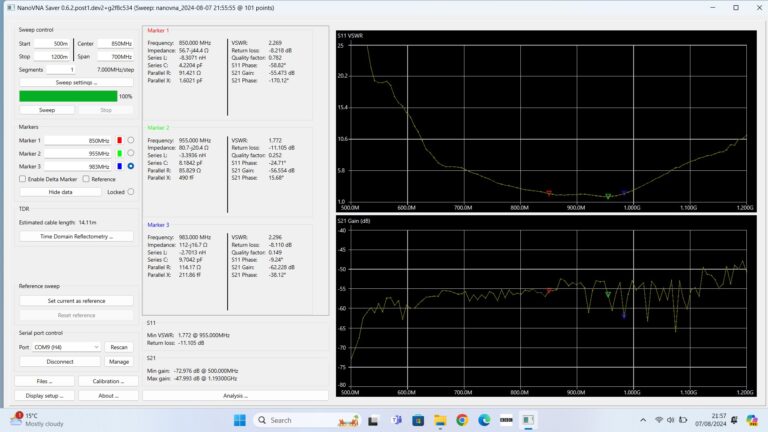1. Introduction to QRM Elimination
In the realm of radio communication, achieving clear reception on the High Frequency (HF) bands is often challenged by the presence of unwanted signals. While the term QRM technically denotes interference from other radio stations, in the context of modern radio operation, it has become widely associated with man-made noise that plagues the HF spectrum 1. This noise, originating from a multitude of local electronic devices such as televisions, computers, power supplies, and even solar panel inverters, can significantly impede the ability of radio operators and shortwave listeners to receive weak and distant signals 2. The increasing density of such electronic devices in residential and urban environments has exacerbated this issue, making the ability to mitigate this interference increasingly important for achieving optimal reception 2. For radio enthusiasts facing the challenge of escalating noise levels, a QRM eliminator presents a practical solution to reduce or, in some cases, almost entirely eliminate local noise interference, thereby improving the overall quality of received signals 2. This type of device offers a tangible benefit, especially for those who may not have the option of relocating to a more radio-quiet environment 7.
2. Understanding the Principles of Operation
The core principle behind the operation of a QRM eliminator lies in the technique of phase cancellation 2. These devices are designed to pick up the interfering noise signal using an auxiliary antenna, separate from the main receiving antenna 2. The signal received by this auxiliary antenna, which ideally contains a strong component of the unwanted noise, is then processed by the QRM eliminator. This processing involves shifting the phase of the noise signal by 180 degrees 2. Subsequently, this phase-inverted noise signal is mixed with the signal received from the main antenna 2. When the noise component present in both signals has a similar amplitude but an opposite phase, they effectively cancel each other out, leaving the desired radio signal with significantly reduced interference 2. The effectiveness of this cancellation process is heavily dependent on the degree to which the noise signal picked up by the auxiliary antenna correlates with the noise present on the main antenna. A strong correlation ensures that the amplitudes can be matched and the phases can be effectively inverted for optimal noise reduction 2.
A crucial element in this process is the auxiliary antenna, which serves the specific purpose of receiving the interfering noise 2. Ideally, this antenna should be positioned and chosen in a way that maximizes the reception of the problematic noise while minimizing the reception of the desired radio signals 7. Various types of antennas can be employed as auxiliary antennas, ranging from simple lengths of wire to more sophisticated active antennas like the Miniwhip 2. The selection and strategic placement of the auxiliary antenna are therefore critical factors influencing the overall performance of the QRM eliminator. Experimentation in this regard may be necessary to achieve the best results in a specific noise environment 7.
To facilitate the necessary adjustments for effective noise cancellation, QRM eliminators are typically equipped with gain controls for both the main and auxiliary antenna signals, as well as a phase control 2. The gain controls allow the operator to adjust the strength or amplitude of the signals received from each antenna before they are combined 2. Achieving a balance in the noise signal amplitude from both antennas is essential for successful phase cancellation; if the amplitudes are significantly different, the noise reduction will be incomplete 2. The phase control, on the other hand, provides the means to precisely shift the phase of the auxiliary antenna’s signal 2. The primary goal of this control is to achieve the critical 180-degree phase opposition required to nullify the noise present on the main antenna 2. Understanding the interplay between these gain and phase controls is fundamental to the effective operation of a QRM eliminator, as they provide the necessary adjustments to manipulate the noise signal for optimal cancellation 2.
3. Setting Up Your QRM Eliminator
The integration of a QRM eliminator into a typical radio setup involves connecting it in the feedline between the transceiver and the main antenna 3. In addition to this primary connection, an auxiliary antenna must be connected to a dedicated port on the QRM eliminator 2. Furthermore, these devices require a power supply, typically 12V DC, for their operation 3. Many QRM eliminators also incorporate a Push-to-Talk (PTT) connection, which serves to bypass the unit during transmission, thereby protecting its internal components from the high power levels associated with transmitting 3. The inclusion of this PTT connection is a vital safety feature and underscores the importance of ensuring it is correctly connected when using the QRM eliminator with a transceiver.
The process of connecting a QRM eliminator can be broken down into several key steps:
- Connect the main transmitting/receiving antenna to the port labeled “MAIN ANT” on the QRM eliminator 7.
- Connect the transceiver to the port labeled “TRX” on the QRM eliminator 3.
- Connect the auxiliary receiving antenna to the port labeled “AUX” on the QRM eliminator 3.
- If your QRM eliminator has a PTT connection, connect a cable from the transceiver’s PTT output (often the amplifier keying line) to the PTT connector on the QRM eliminator 3.
- Connect the DC power supply to the power jack on the QRM eliminator 3. It is crucial to ensure the correct polarity of the power supply connection, with the center pin typically being positive 11.
When considering the auxiliary antenna, it is important to recognize that the optimal choice and placement can significantly impact the effectiveness of the QRM eliminator 7. Experimentation with different types of auxiliary antennas, such as simple wires, vertical antennas, or active antennas like the Miniwhip, and their respective placements is often necessary to find the configuration that picks up the most of the local interfering noise 2. Given that man-made noise is frequently vertically polarized, an auxiliary antenna with a vertical orientation or a vertically oriented wire might prove particularly effective 7. Ideally, the auxiliary antenna should be less efficient at receiving the distant DX signals that the operator wishes to hear 7. If the location of the noise source is suspected or known, positioning the auxiliary antenna closer to it might enhance its ability to pick up the interfering signal 8. The most effective auxiliary antenna setup is often highly specific to the particular noise environment, and radio operators should be prepared to try different options to achieve the best noise reduction.
4. Mastering the Controls: Phase and Amplitude
QRM eliminators typically feature separate gain controls for the signals received from the main antenna and the auxiliary antenna 2. These controls might be labeled as “MAIN ANT GAIN” and “AUX GAIN,” or in some models, such as the one described in 12, as “GAIN1” and “GAIN2.” Regardless of the labeling, their function is to adjust the amplitude or strength of the signal coming from each antenna before these signals are combined within the QRM eliminator for the purpose of noise cancellation 2. The primary objective when adjusting these gain controls is to ensure that the noise signal originating from the auxiliary antenna has a similar amplitude to the noise signal that is present on the main antenna 2. Achieving this balance in amplitude is a fundamental prerequisite for effective phase cancellation. If the noise signal amplitudes from the two antennas are significantly different, the subsequent phase inversion and mixing will result in only partial, rather than complete, noise reduction.
The phase control on a QRM eliminator allows the operator to adjust the phase relationship between the signal from the auxiliary antenna and the signal from the main antenna 2. The ultimate goal of manipulating this control is to shift the phase of the noise signal picked up by the auxiliary antenna by precisely 180 degrees relative to the phase of the noise present on the main antenna 2. When the amplitudes of the two noise signals are equal, and their phases are opposite (180 degrees apart), the phenomenon of destructive interference occurs, leading to the cancellation or nullification of the unwanted noise 2. The phase control, therefore, is the key to achieving this destructive interference and is crucial for fine-tuning the QRM eliminator to its optimal performance.
It is important to recognize that the gain and phase controls on a QRM eliminator often exhibit an interactive relationship 2. This means that making an adjustment to one control may necessitate a subsequent adjustment to the other to maintain or improve the level of noise reduction. The typical adjustment process involves an iterative approach, where the operator makes small adjustments to both the gain and phase controls while continuously monitoring the level of received noise 2. This back-and-forth tweaking is often required to find the precise settings that yield the most significant reduction in the interfering noise. Therefore, users should understand that setting up a QRM eliminator for optimal performance is not typically a one-time adjustment but rather an ongoing process of fine-tuning both gain and phase to locate the point where the unwanted noise is most effectively suppressed.
Table 1: Common QRM Eliminator Controls and Functions
| Control Name | Function | Purpose |
| Main Antenna Gain | Adjusts the signal strength from the main transmitting/receiving antenna. | To balance the amplitude of the noise signal from the main antenna with that from the auxiliary antenna. |
| Auxiliary Antenna Gain | Adjusts the signal strength from the auxiliary receiving antenna. | To provide a noise signal with sufficient and adjustable amplitude for effective cancellation. |
| Phase | Shifts the phase of the signal from the auxiliary antenna. | To create a 180-degree phase difference between the noise signals from the two antennas, leading to destructive interference and cancellation. |
5. Locating the Noise Source (If Necessary)
While a QRM eliminator can effectively reduce local noise without requiring precise knowledge of the noise source’s location 3, attempting to pinpoint the source can sometimes be beneficial in optimizing the placement of the auxiliary antenna 8. One method for achieving this involves using a portable receiver equipped with a directional antenna, such as a small loop antenna or even a handheld Yagi antenna 8. By carefully rotating the directional antenna, the operator can often identify a specific direction in which the received noise signal is strongest. This direction can provide a general indication of the location of the noise source.
Another approach to identifying the noise source involves closely observing the characteristics of the interfering noise 2. The specific nature of the noise, whether it’s a buzzing sound, a series of clicks, or a constant hum, can sometimes offer clues about the type of electronic device that is generating the interference. Furthermore, noting any correlations between changes in the noise level and the operation of specific devices within the operator’s home or in the immediate vicinity can help in identifying the source of the unwanted signal. For instance, if the noise level increases significantly when a particular appliance is turned on, that appliance is likely the culprit.
Even without successfully pinpointing the exact source of the noise, experimenting with the location and orientation of the auxiliary antenna can be an effective strategy for optimizing its performance 7. The key objective is to find a position where the auxiliary antenna picks up the interfering noise as strongly as possible while simultaneously minimizing its reception of the desired radio signals 7. In many instances, achieving optimal noise reduction is possible through careful experimentation with auxiliary antenna placement, guided by the resulting reduction in the noise level, without the need for precise source identification.
6. Step-by-Step Guide to Noise Cancellation
To effectively utilize a QRM eliminator for noise cancellation, follow these step-by-step instructions:
- Begin by ensuring that all connections between the main antenna, transceiver, auxiliary antenna, power supply, and PTT line (if applicable) are correctly made as outlined in Section 3.
- Turn on the QRM eliminator. Most units will have an on/off switch and an indicator light to show when the unit is active 11.
- Set the gain controls for both the main and auxiliary antennas to a neutral or mid-range position. Some operators prefer to start with both gain controls set to the same position 2.
- Similarly, set the phase control to a neutral or mid-range position as an initial starting point 2.
- Monitor the level of received noise using the S-meter on your transceiver or, ideally, a spectrum display on an SDR receiver 2. Alternatively, you can listen to the noise level by ear 2.
- Slowly adjust the gain control of the auxiliary antenna while carefully observing the noise level. The goal at this stage is to find a setting where the noise begins to decrease 2.
- Next, slowly adjust the phase control, continuing to monitor the noise level. Look for a specific point in the rotation of the phase control where the noise is significantly reduced or almost completely nulled out 2.
- If necessary, fine-tune the gain control of the main antenna to further minimize the residual noise 2.
- Repeat steps 6 through 8, making small, incremental adjustments to both the gain and phase controls until the lowest possible noise level is achieved 2. Be aware that these controls often interact, so you may need to go back and forth between them to find the optimal settings. This iterative process may require some patience.
Utilizing a spectrum display on an SDR receiver can greatly enhance the adjustment process 2. The visual representation of the noise signal allows you to see it diminish in amplitude as you manipulate the gain and phase controls 2. Some users describe this as the interference signal “turning away” compared to the desired signals 2. This visual feedback can provide a more precise and intuitive way to fine-tune the QRM eliminator compared to relying solely on the S-meter or auditory perception.
It is also crucial to remember that the optimal settings for a QRM eliminator are often frequency-specific 2. The settings that provide the best noise reduction on one frequency band or even within a specific segment of a band may not be optimal on another. Therefore, you might need to readjust the gain and phase controls when you change frequencies significantly to maintain the most effective noise cancellation 2.
7. Advanced Techniques and Fine-Tuning
For optimal performance of a QRM eliminator, particularly across a wider range of frequencies, experimenting with different types of auxiliary antennas can be beneficial 2. For broadband noise reduction, an active antenna like the Miniwhip has been reported to be very effective at picking up local noise 2. For more specific or localized noise sources, a simpler antenna might suffice 3. Considering the polarization of the noise can also guide the choice and orientation of the auxiliary antenna, as man-made noise is often vertically polarized 7. For very strong noise that originates from a close proximity, a short wire placed inside the operating shack might be adequate as an auxiliary antenna 3. Conversely, for broader HF coverage or when dealing with noise sources further away, an outdoor auxiliary antenna positioned to effectively receive the noise might be necessary 5. The selection of the most suitable auxiliary antenna should ideally be tailored to the specific characteristics of the noise being experienced to achieve the best possible cancellation across the desired frequency range.
It is important to note that QRM eliminators are generally most effective when dealing with a single, dominant source of interfering noise 2. If multiple independent noise sources are present, achieving simultaneous cancellation of all of them with a single QRM eliminator can be challenging. In situations where multiple noise sources are contributing to the interference, a practical approach might be to first identify and attempt to mitigate the strongest noise source, as this is likely to provide the most significant improvement in reception.
Experienced radio operators often rely on a combination of auditory feedback and visual cues from the S-meter to fine-tune the noise cancellation process 2. The goal is to find the precise settings of the gain and phase controls that result in the minimum level of noise without causing a significant attenuation of the desired radio signals. Developing the ability to discern subtle changes in both the noise and the desired signal levels while making adjustments to the QRM eliminator is a skill that typically improves with practice. This fine-tuning by ear and by observing the S-meter allows the operator to find the “sweet spot” where the noise is effectively suppressed, revealing weaker signals that might otherwise be masked by the interference.
8. Common Issues and Troubleshooting
One common issue encountered when using a QRM eliminator is the unintentional loss or attenuation of the desired radio signals 2. This can occur if the auxiliary antenna, in addition to picking up the interfering noise, also receives the desired signal strongly. In such a scenario, the QRM eliminator might mistakenly identify and attempt to cancel out components of the desired signal along with the noise. This problem can often be resolved by carefully repositioning or changing the type of auxiliary antenna used, aiming for a configuration that is less sensitive to the direction and polarization of the desired signal while remaining effective at receiving the noise 7. Finding the optimal balance where the auxiliary antenna effectively picks up the noise but not the desired signal is a key aspect of successful QRM elimination.
Another potential issue is ineffective noise reduction 2. This can happen if the noise present on the main antenna and the noise picked up by the auxiliary antenna are not sufficiently correlated. For example, if the noise originates from multiple different sources or if the signal paths of the noise to the two antennas are significantly different, the QRM eliminator might struggle to achieve effective cancellation 2. Additionally, if the noise source is very close to the operator’s location and is flooding the environment from all directions, it might be difficult to isolate and pick up a representative sample of the noise with an auxiliary antenna, thus limiting the effectiveness of the QRM eliminator 8.
As previously mentioned, the optimal settings for a QRM eliminator are frequency-specific 2. This means that if you frequently change the operating frequency, especially across different bands, you will likely need to readjust the gain and phase controls each time to maintain the best possible noise reduction 2. This frequency-dependent nature of the adjustments can sometimes be inconvenient for operators who frequently switch between different parts of the HF spectrum.
Finally, it is essential to ensure that the QRM eliminator is properly integrated with the other equipment in your radio station, particularly the transceiver and any amplifiers being used 7. Always ensure that the PTT connection is correctly implemented if you intend to transmit while the QRM eliminator is in the circuit. Failure to do so can potentially lead to damage to the QRM eliminator from the high power levels during transmission 7.
9. Community Wisdom: Best Practices and Experiences
Online forums and discussion platforms dedicated to amateur radio, such as Reddit’s r/amateurradio 1, serve as valuable resources for individuals seeking tips, tricks, and troubleshooting advice related to QRM eliminators. By searching for specific models of QRM eliminators or for general discussions on QRM elimination techniques, users can often find helpful insights and learn from the experiences of other radio operators who have faced similar challenges. These online communities provide a platform for users to share their successes, ask questions about difficult noise problems, and exchange best practices for using these devices.
In addition to community forums, the websites of QRM eliminator manufacturers, such as Wimo and Xiegu 3, often provide valuable resources like product manuals, frequently asked questions (FAQs), and sometimes even video demonstrations illustrating the use of their products. Furthermore, independent reviews conducted by radio amateurs, such as those by PA9X 2, can offer practical, real-world insights into the performance and usability of different QRM eliminator models. Consulting these official manufacturer resources and independent reviews can provide a more comprehensive understanding of specific QRM eliminators and their effectiveness in various operating scenarios.
A recurring theme in the experiences shared by the radio community is the importance of experimentation and patience when using a QRM eliminator 2. Achieving optimal noise reduction often requires trying different types and placements of auxiliary antennas and carefully adjusting the gain and phase controls to find the settings that work best for the specific noise environment. Many users report that finding the “sweet spot” for noise cancellation can sometimes be a bit tricky and may require multiple attempts and fine adjustments 7. The general consensus is that with persistence and a willingness to experiment, significant improvements in reception can often be achieved through the careful use of a QRM eliminator.
10. Conclusion
In summary, a QRM eliminator operates on the principle of phase cancellation, utilizing an auxiliary antenna to pick up interfering noise, inverting its phase, and mixing it with the signal from the main antenna to reduce or eliminate the unwanted noise. Effective use requires proper setup, including correct connection of the main and auxiliary antennas, the transceiver, and the power supply, as well as understanding the function and interplay of the gain and phase controls. The optimal settings are often frequency-specific and may require readjustment when changing bands or frequencies. While QRM eliminators are most effective against a single dominant noise source, they can significantly improve reception in noisy environments by revealing weaker signals that would otherwise be masked by interference. Experimentation with different auxiliary antennas and their placement, along with a patient and iterative approach to adjusting the controls, are key to achieving the best possible results. Online communities and manufacturer resources offer valuable support and insights for users looking to master the use of these helpful devices. With careful setup and adjustment, a QRM eliminator can indeed be a valuable tool for enhancing the enjoyment and effectiveness of HF radio operation in the presence of man-made noise.
Works cited
- Eliminating QRM : r/amateurradio – Reddit, accessed on March 27, 2025, https://www.reddit.com/r/amateurradio/comments/i6eqlu/eliminating_qrm/
- Tips on how to operate and finetune a QRM Eliminator – PA9X, accessed on March 27, 2025, https://www.pa9x.com/tips-on-how-to-operate-and-finetune-a-qrm-eliminator/
- Wimo QRM noise eliminator problems with local QRM. – Radio World, accessed on March 27, 2025, https://www.radioworld.co.uk/wimo-qrm-noise-eliminator
- QRM-Eliminator – WiMo, accessed on March 27, 2025, https://www.wimo.com/en/qrm-eliminator
- WiMo QRM Eliminator 26000 – DX Engineering, accessed on March 27, 2025, https://www.dxengineering.com/parts/wmo-26000
- QRM-Eliminator – Xiegu.eu, accessed on March 27, 2025, https://xiegu.eu/product/qrm-eliminator/
- Mile Kokotov – QRM-Eliminator – QSL.net, accessed on March 27, 2025, https://www.qsl.net/z33t/qrm_eliminator_eng.html
- What exactly is this X-Phase HF QRM Eliminator? : r/amateurradio – Reddit, accessed on March 27, 2025, https://www.reddit.com/r/amateurradio/comments/13t6gr8/what_exactly_is_this_xphase_hf_qrm_eliminator/
- The X-Phase-2 QRM-killer – VERON a43, accessed on March 27, 2025, https://a43.veron.nl/wp-content/uploads/2020/04/X-Phase_eng.pdf
- Boost your QRM eliminator performance with an active antenna – PA9X, accessed on March 27, 2025, https://www.pa9x.com/boost-your-qrm-eliminator-performance-with-an-active-antenna/
- PROD REV.indd – DX Engineering, accessed on March 27, 2025, https://static.dxengineering.com/global/images/technicalarticles/wmo-26000_sh.pdf
X-Phase QRM Eliminator – VK4PK, accessed on March 27, 2025, https://www.lyonscomputer.com.au/Electronic-Modules/X-Phase-QRM-Eliminator/X-Phase-QRM-Eliminator.html



